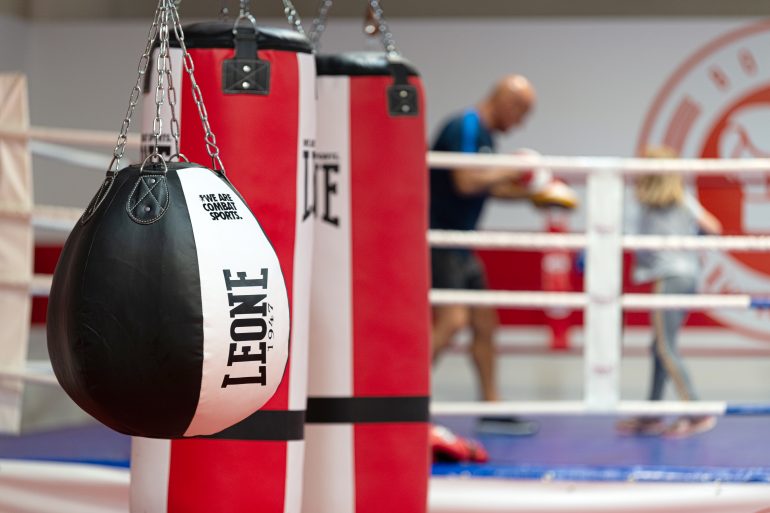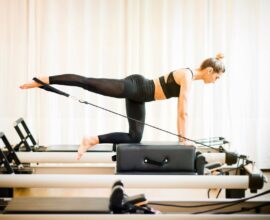Boxing: origins and benefits of the noble art
Boxing: the story behind one of the oldest combat disciplines
Boxing is one of the oldest combat sports in history and takes place within a square space called the ring. We can observe the figures of people fighting with closed fists in the prehistoric graffiti from the third millennium B.C, now kept in the British Museum of London, while a sculpture found in Thebes, in Egypt, dating back to 1350 B.C depicts two boxers fighting and several spectators around them.
The first literary evidence of boxing is in the 23rd Book of the Iliad of Homer, reporting the funeral games organized by Achilles in honour of the death of Patroclus. Boxing was considered the ideal activity for physical and psychological health in Ancient Greece, it was so popular it became an Olympic discipline in the XIII Ancient Olympiad of 688 BC.
Boxers used leather strips about 4 meters long wrapped around the wrists and knuckles to protect their hands. The game had no “rounds” since they fought until the surrender of one of the boxers or until one of the two was unable to continue, nor “weight categories”, so the heavier athletes became the absolute winners of each match.
Boxing was popular also during the Roman era. The leather bands were replaced with stronger materials to protect the hands, transforming the fists into weapons. The “caestus”, or gloves used by the ancient Romans, were reinforced with metal inserts, iron plates and sharp blades that ensured a quick as a bloody finale.
We must remember that the audience at the time was not interested in the technique or the quality of the competition, but mostly gave importance to the performance of the show which usually didn’t last long and ended with the annihilation of one of the boxers.
With the fall of the Roman Empire and the diffusion of Christianity, boxing was banned due to its brutality, and it fell into decline until it was almost completely forgotten during the Middle Ages.
Boxing: how boxing has changed from the 16th century to the present day
In the sixteenth century, when the use of swords became less frequent, the British rediscovered fighting with bare hands, which is referred to as “prizefighting” in some documents of the time.
The first boxing match was organized by Christopher Monck, Duke of Albemarle, in 1681, England, and included his butler and his butcher, it was the latter who won the match and the money.
In those years, the discipline wasn’t defined, there were no written rules or divisions by weight classes, and there was no arbitrator. In general, the matches were chaotic events full of punches, headbutts, fingers in the eyes, hands around the neck of the opponent and blows that today are banned from the sport.
The first rules of boxing came only many years later, and more precisely in 1743, thanks to the interest of English boxer Jack Broughton.
Nicknamed the London Prize Ring Rules, the rules developed by Broughton were intended to protect boxers from the fatality risk, which was common in those years, and the subsequent rules of the Marquess of Queensberry, The Treaty of Rome, drawn up in 1867, inspired the current regulation.
Here are some of the London Prize Ring Rules:
• if a contender fell to the ground and failed to resume the fight within 30 seconds, the match would end with the victory of the opponent;
• hitting the opponent on the ground and seizing him under the waist was forbidden;
• Every boxer had the chance to suspend the fight at any time by touching one knee on the ground. In that case, he would have a 30-second count.
Broughton also encouraged boxers to use mufflers, a kind of hand protection glove, to cushion the blows on the opponent’s body during training and matches.
Boxing was widespread in the United States during the late 19th century, its popularity continued to grow in the 20th century with Jack Johnson, Jess Willard, Jack Dempsey, Joe Louis, Rocky Marciano, Floyd Patterson and the famous champion Cassius Clay, who is remembered as Muhammad Ali.
Boxing: 10 benefits of a sport that is good for the body and mind
Boxing keeps the body fit and trains the mind. Here are the ten advantages of this discipline:
1. Sculpts the body, not making it heavier
2. Helps to burn calories and lose weight
3. Stimulates the cardiovascular system
4. Tones the muscles
5. Increases endurance and strength
6. Strengthens the immune system
7. Improves coordination, reflexes, speed and balance
8. Improves concentration and control
9. Eliminates stress and anxiety
10. Increases courage and self-confidence
Boxing: the Buglioni Boxing Academy by Leone 1947 at Forte Village
At Forte Village, the award-winning resort in Santa Margherita di Pula in the province of Cagliari, the young and old can learn the secrets of boxing by enrolling at the Boxing Academy, where they will find an exceptional coach: the international champion Frank Buglioni.
The Boxing Academy is in the beautiful Sports Academy Center, with a fully equipped gym and a genuine ring, and is structured into five lessons (Monday to Friday) and divided into two groups, one for adults and one for children. Private lessons are also available.
The minimum age for enrollment at the academy is 8 years old, and all participants will receive a training kit.
Want to have an unforgettable holiday and work out with a boxing champion like Frank Buglioni? Discover the Forte Village Resort in Sardinia.






